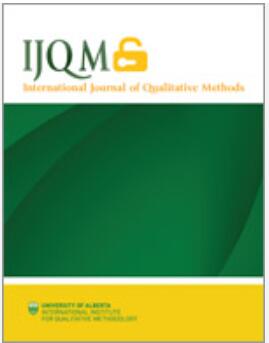“他们说这是她的错……这不是真的!”与青春期女孩一起使用Vignets集体解决性暴力规范
IF 3.8
2区 社会学
Q1 SOCIAL SCIENCES, INTERDISCIPLINARY
引用次数: 0
摘要
本文讨论了在卢旺达34名15-19岁少女的焦点小组讨论中试行小插曲研究工具的问题。这项研究的目的是阐明有关性暴力的规范。通过“集体能力”的视角,重点关注如何超越个人层面的变革,实现惠及所有女孩的赋权进程,我们反思了这一方法工具为扩大女孩对导致性暴力的规范的理解以及她们可以应对的具体情况提供的机会。在概述了小插曲练习以及参与者使用关于性暴力的小插曲的方式后,我们展示了女孩对性暴力的描述,这些描述是基于小插曲的讨论以及我们对这些发现的分析得出的。我们发现,围绕性别、性取向、年龄和安全责任的性别社会规范,将责任归咎于遭受性暴力的女孩,在阻止女孩使用报告机制方面发挥了作用。尽管女孩们强烈意识到这是不公平的,但她们意识到,她们也必须找到驾驭这些规范的方法,避免因自己的受害而受到指责。基于这些数据,我们认为,在定性纵向研究的背景下使用小插曲,可以深入了解性暴力的驱动因素和原因的规范,因为主题的敏感性,这些规范在其他方面很难引出。我们发现,小插曲可以成为一种赋权工具,既可以提出女孩面临的“隐性”问题,也可以为女孩创造机会,让她们在性暴力普遍存在但报告不足的情况下集体制定问责途径。然而,解决性暴力问题的战略必须考虑到报告的障碍,其中包括查明施暴者和使自己遭受耻辱和指责对女孩的社会影响。本文章由计算机程序翻译,如有差异,请以英文原文为准。
‘They Say it was Her Fault… This is Not True!’ Using Vignettes With Adolescent Girls to Collectively Address Norms About Sexual Violence
This article discusses the piloting of vignette research tools within focus group discussions involving 34 adolescent girls aged 15–19 in Rwanda. The purpose of the research was to elucidate norms around sexual violence. Through a ‘collective capabilities’ lens, which focuses on ways to move beyond change at the individual level towards empowerment processes that benefit all girls, we reflect on the opportunities this methodological tool offers for expanding girls’ understanding of the norms that enable sexual violence, and the context-specific ways they can respond. After providing an overview of the vignettes exercise and the way in which the vignette on sexual violence was used with participants, we present girls’ accounts of sexual violence drawn from discussions based around the vignettes and our analysis of these findings. We find that gendered social norms around gender, sexuality, age, and responsibility for safety that apportion blame to girls who experience sexual violence play a role in preventing girls from using reporting mechanisms. Although girls have a strong sense of this being unfair, they realise they must also find ways to navigate these norms to avoid being blamed for their own victimisation. Based on this data, we suggest that the use of vignettes in the context of qualitative longitudinal research offers insights into norms about the drivers and causes of sexual violence that are otherwise challenging to elicit because of the sensitivity of the topic. We find that vignettes can be an empowering tool, both in raising ‘unspoken’ issues girls face and in creating the opportunity for girls to collectively work out pathways to accountability in a context where sexual violence is widespread but underreported. However, strategies to address sexual violence must account for barriers to reporting that include the social implications for girls of identifying perpetrators and exposing themselves to stigma and blame.
求助全文
通过发布文献求助,成功后即可免费获取论文全文。
去求助
来源期刊

International Journal of Qualitative Methods
SOCIAL SCIENCES, INTERDISCIPLINARY-
CiteScore
6.90
自引率
11.10%
发文量
139
审稿时长
12 weeks
期刊介绍:
Journal Highlights
Impact Factor: 5.4 Ranked 5/110 in Social Sciences, Interdisciplinary – SSCI
Indexed In: Clarivate Analytics: Social Science Citation Index, the Directory of Open Access Journals (DOAJ), and Scopus
Launched In: 2002
Publication is subject to payment of an article processing charge (APC)
Submit here
International Journal of Qualitative Methods (IJQM) is a peer-reviewed open access journal which focuses on methodological advances, innovations, and insights in qualitative or mixed methods studies. Please see the Aims and Scope tab for further information.
 求助内容:
求助内容: 应助结果提醒方式:
应助结果提醒方式:


